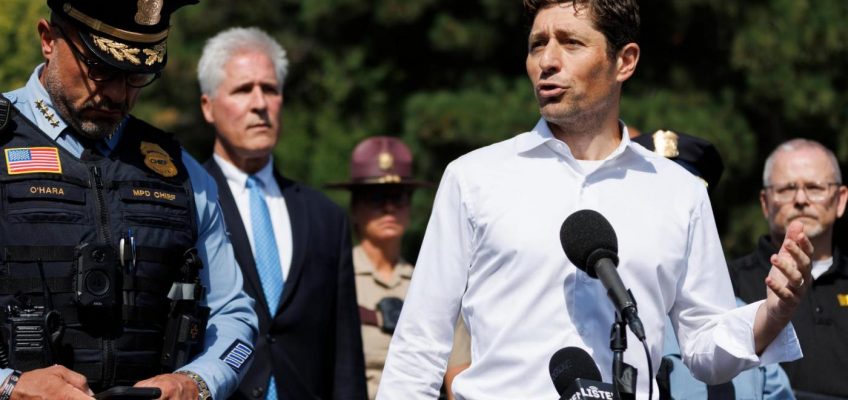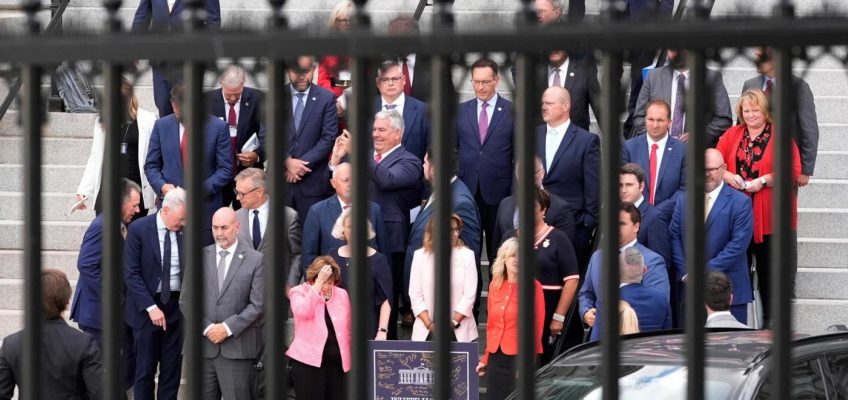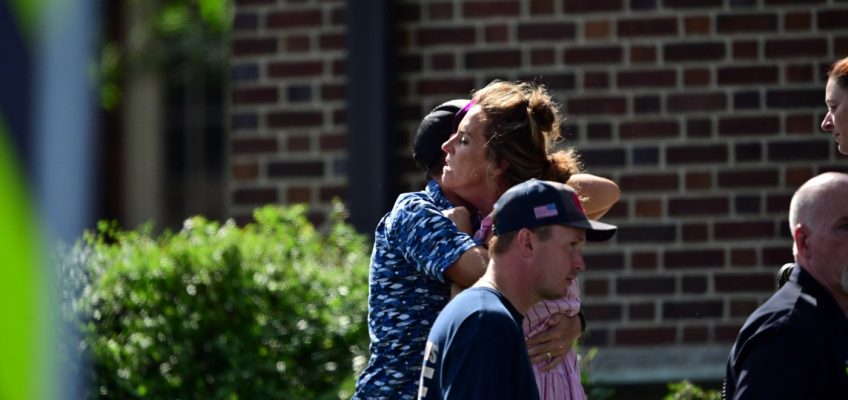A heavily armed assailant fired through the windows of a Catholic church in Minneapolis where students were celebrating their first Mass of the new school year Wednesday, killing an 8-year-old and a 10-year-old in the pews and injuring 17 others, the police said.
Children and staff members ducked for cover under the pews just as Mass was beginning at about 8:30 a.m. Central time at the Annunciation Catholic Church, which has a school for children from prekindergarten through eighth grade. Monday was the first day of school, and the all-school Mass on Wednesday was an annual tradition.
Of the 17 people injured, 14 were children ranging in age from 6 to 15, the Minneapolis police chief, Brian O’Hara, said at a news conference. Three were parishioners in their 80s, he said. All were expected to survive, he said.
The attacker, who was armed with a rifle, a shotgun and a pistol, died of a self-inflicted gunshot wound, O’Hara said. He identified the assailant as Robin Westman, 23.
Investigators believe the attacker was a former student at the school, according to a law enforcement official with knowledge of the investigation. The suspect’s mother is a retired school employee, the official said.
O’Hara said investigators were examining the shooter’s YouTube account, which had been taken offline with the help of the FBI.
The suspect’s social media accounts contain videos of diary entries that describe the killing of children and a drawing of the Annunciation Church’s sanctuary. The videos also show weapons, bullets and what appear to be explosive devices scrawled with violent language.
“We don’t have a motive at this time,” O’Hara said Wednesday afternoon.
The guns used in the attack had been lawfully purchased, he said. At least two doors of the church had been barricaded from the outside, he said.
Ellie Mertens, 25, a youth minister at the church, said she was sitting with children in the pews when bullets started ripping through the windows. The shooting lasted for about 2 minutes, she said.
“I was just feet away from this window where it was,” Mertens said in an interview. “The pew saved my life.”
Mayor Jacob Frey of Minneapolis said at a news conference that “you cannot put into words the gravity, tragedy or absolute pain of the situation.”
Frey, a vocal advocate for stricter gun laws, added: “Don’t just say this is about thoughts and prayers right now. These kids were literally praying.”
Inside the Hennepin County Medical Center emergency room, where multiple victims were taken, Za’khia Jones, 29, was with her fiancée when she saw children who appeared to be bloody being rushed in. “One kid came in and they had rushed her into a room and she was just screaming she didn’t want to die,” Jones said in an interview.
The attack was the fourth deadly shooting in the city in just over 24 hours. And the Twin Cities area was rattled in June when a gunman assassinated a state lawmaker and her husband and left another lawmaker and his wife hospitalized with gunshot wounds, setting off a two-day search.
Related Articles
Walz, Trump order flags half staff after Minneapolis Catholic school shooting
What to know about the shooting at a Minneapolis Catholic school
The Latest: A shooting at a Minneapolis Catholic school kills 2 children, injures 17 people
A shooting at a Minneapolis Catholic school kills 2 children, injures 17 people
One dead, 6 hurt after shooter opens fire with high-powered rifle in Minneapolis
Gov. Tim Walz expressed support for the school community in a statement.
“I’m praying for our kids and teachers whose first week of school was marred by this horrific act of violence,” Walz said.
President Donald Trump spoke with Walz by phone, a White House official said. Trump also commented on the shooting on social media.
“I have been fully briefed on the tragic shooting in Minneapolis, Minnesota,” Trump wrote. “The FBI quickly responded and they are on the scene. The White House will continue to monitor this terrible situation. Please join me in praying for everyone involved!”
This article originally appeared in The New York Times.




